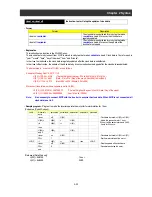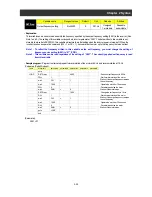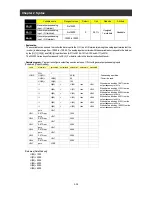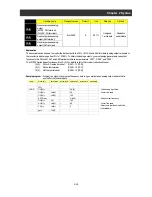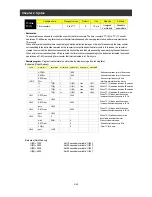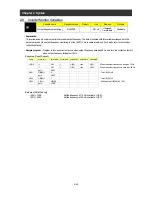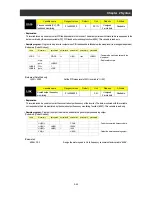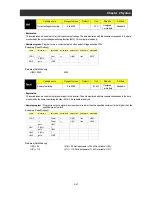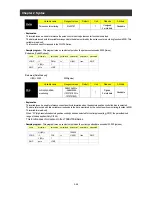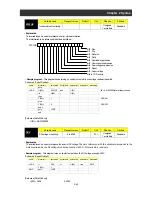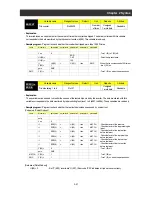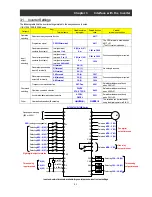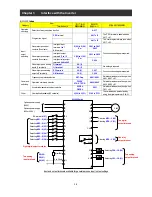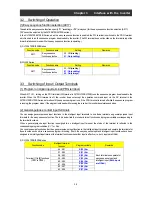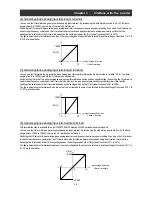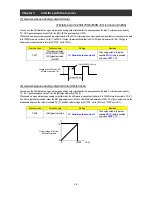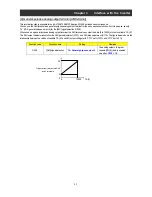
Chapter 2 Syntax
2-47
Vout
Variable name
Range of values
Default
Unit
Data size
Attribute
Output voltage monitoring
0 to 6000
-
0.1 V
Unsigned
1-word data
Readable
- Explanation
This variable can be used to monitor the inverter output voltage. The data monitored with this variable corresponds to the data
monitored by the output voltage monitoring function (d013). This variable is read-only.
- Sample program :
Program to turn a contact output on when output voltage exceeds 200 V
(Code area [Code Window])
Label
Mnemonic
parameter1
parameter2
parameter3
parameter4
parameter5
㩷
㩷 䋺
㩷
㩷
㩷
㩷
㩷
LOOP if
Vout >=
U(00) then
SKIP
㩷
Y(00)= 1
㩷
㩷
㩷
SKIP
goto LOOP
㩷
㩷
㩷
㩷
㩷
㩷 䋺
㩷
㩷
㩷
㩷
㩷
(Data area [Data Window])
U (00) = 2000
: 200V
Power
Variable name
Range of values
Default
Unit
Data size
Attribute
Power monitoring
0 to 9999
-
0.1 kW
Unsigned
1-word data
Readable
- Explanation
This variable can be used to monitor power input to the inverter. The data monitored with this variable corresponds to the data
monitored by the power monitoring function (d014). This variable is read-only.
- Sample program :
Program to output a signal when input power is lower than the specified minimum limit or higher than the
specified maximum limit
(Code area [Code Window])
Label
Mnemonic
parameter1
parameter2
parameter3
parameter4
parameter5
㩷
㩷 䋺
㩷
㩷
㩷
㩷
㩷
LOOP if
Power <
U(10) then
LBL1
㩷
if Power
>
U(11)
then
LBL2
㩷
goto LBL3
㩷
㩷
㩷
㩷
LBL1 Y(00)= 1
㩷
㩷
㩷
㩷
goto LBL3
㩷
㩷
㩷
㩷
LBL2 Y(02)= 1
㩷
㩷
㩷
LBL3 goto
LOOP
㩷
㩷
㩷
㩷
㩷
㩷 䋺
㩷
㩷
㩷
㩷
㩷
(Data area [Data Window])
U (10) = 55
: U (10) = 55: Set input power of 5.5 kW in variable “U (10)”.
U (11) = 110
: U (11) = 110: Set input power of 11 kW in variable “U (11)”.
Summary of Contents for NT2021XA
Page 4: ... Safety Instructions ...
Page 8: ... Contents ...
Page 10: ...Chapter 1 Outline of EzSQ ...
Page 14: ...1 4 Chapter 1 Outline of EzSQ ...
Page 16: ...Chapter 2 Syntax ...
Page 68: ...2 52 Chapter 2 Syntax ...
Page 70: ...Chapter 3 Interface with the Inverter ...
Page 80: ...3 10 Chapter 3 Interface with the Inverter ...

